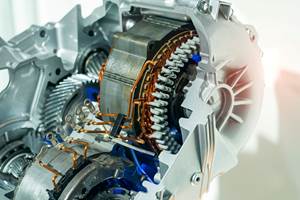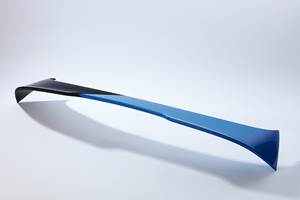New Vehicle Sales at All-Time High
Yet production is growing at a slower pace, a trend that is likely to continue.
In December 2016, new vehicle sales in the U.S. were 18,680,000 units (seasonally adjusted at an annual rate). That was the highest level for vehicle sales since July 2005. But the high level of new vehicle sales is not leading to accelerating growth in production. Let’s look at some of the leading indicators to see where the automotive industry might be headed in the next six to 12 months.
Real 10-Yr Treasury Rate. The real (inflation-adjusted) 10-yr U.S. Treasury bond interest rate was 1.23% in December 2016, which was an increase of 24 basis points (hundredths of a percent) from the previous month. This was the highest real 10-yr Treasury rate since last April. The nominal rate was 2.49%, which was the highest since September 2014. But the rate of inflation has been rising too. In December, the inflation rate was above 2% for the first time since June 2014. The increase in inflation was limiting the rise in the real 10-yr Treasury rate (the real rate is the nominal rate minus inflation). The year-over-year change in the real rate increased to -89 basis points. That was the second straight month of an increase. The increase in the year-over-year change in the 10-yr Treasury is likely to lead to a decline in new vehicle sales as financing becomes more expensive.
Real Motor Vehicle & Parts Consumer Spending. Despite the increase in the real 10-yr Treasury rate at the end of 2016, real motor vehicle and parts (MV&P) spending by consumers grew significantly in the fourth quarter of 2016. In December, MV&P consumer spending was 8.7% more than it was a year ago. That was the second fastest rate of growth since January 2015. And it was the fourth time in five months that the rate of change from the same month a year earlier was at least 4.5%. This is significant because the historic average for that rate of change is 4.2%. As a result, the annual year-to- date rate of growth accelerated for the third straight month to 2.9%, which was the fastest rate of annual growth since February 2016.
But if the change in the interest rate continues to rise, expect MV&P spending to grow at a slower rate around the second quarter.
Real Motor Vehicle & Parts New Orders. New MV&P orders grew 2.7% in December compared with one year ago. This was the third time in four months that new orders grew. However, the rate of growth from the same month a year earlier slowed noticeably since March 2016. Therefore, the year-to-date annual rate of growth in new orders decelerated to 2.1%. This was the ninth consecutive month of decelerating growth. And the annual rate of growth in December was the slowest since May 2010, which was the last time that the annual rate of change in real motor vehicle and parts new orders contracted.
Motor Vehicle & Parts Industrial Production. The growth rate in motor vehicle and parts production was quite strong in December 2016. Compared with one year ago, production grew 8.4%, which was the fastest rate of growth since February 2016. But the general trend has been slower growth in production since July 2014, which is likely to continue, given the trends in the interest rate and new orders.
ABOUT THE AUTHOR: Steven Kline Jr. is part of the fourth-generation ownership team of Cincinnati-based Gardner Business Media, which is the publisher of Plastics Technology. He is currently the company’s director of market intelligence. Contact: (513) 527-8800 email: skline2@gardnerweb.com; blog: gardnerweb.com/economics/blog
Related Content
PEEK for Monolayer E-Motor Magnet Wire Insulation
Solvay’s KetaSpire KT-857 PEEK extrusion compound eliminates adhesion and sustainability constraints of conventional PEEK or enamel insulation processes.
Read MoreCelanese to ‘Shine’ at CES 2023 with Expanded Portfolio of Materials
With it acquisition of DuPont’s engineering resins, Celanese’s resin solutions for automotive electrification, e-mobility and consumer electronics are plentiful.
Read MoreK 2022 Preview: Engineering Materials for Sustainability and E-Mobility
Materials that are sustainable yet offer equal performance to their fossil-based counterparts will be prominent at K 2022.
Read MoreImpacts of Auto’s Switch to Sustainability
Of all the trends you'll see at NPE2024, this one is BIG. Not only is the auto industry transitioning to electrification but there are concerted efforts to modify the materials used, especially polymers, for interior applications.
Read MoreRead Next
Understanding Melting in Single-Screw Extruders
You can better visualize the melting process by “flipping” the observation point so that the barrel appears to be turning clockwise around a stationary screw.
Read MoreLead the Conversation, Change the Conversation
Coverage of single-use plastics can be both misleading and demoralizing. Here are 10 tips for changing the perception of the plastics industry at your company and in your community.
Read MoreWhy (and What) You Need to Dry
Other than polyolefins, almost every other polymer exhibits some level of polarity and therefore can absorb a certain amount of moisture from the atmosphere. Here’s a look at some of these materials, and what needs to be done to dry them.
Read More
.JPG;width=70;height=70;mode=crop)






















